
 Quebec is the oldest and largest port in Canada after Montreal, and lies below the dramatic setting of a massive citadel built by the British in 1832 with a circumference of nearly three miles. The busy port handles around 33.5 million tonnes of cargo and around 168,000 cruise passengers per year, many of whom climb one of the eleven sets of stone steps that link the port with the Upper Town some 250 feet above. Place Royale at the foot of the citadel is the oldest town square in all of North America, and the views of the city from the citadel are very impressive and dominated by the massive, turreted Chateau Frontenac. Fortunately, a funicular transports pedestrians to stay in the Frontenac, which is now a converted into a luxury hotel from the accommodation in the former Canadian Pacific Railways (CPR) establishment for railway passengers waiting to travel across Canada.
Quebec is the oldest and largest port in Canada after Montreal, and lies below the dramatic setting of a massive citadel built by the British in 1832 with a circumference of nearly three miles. The busy port handles around 33.5 million tonnes of cargo and around 168,000 cruise passengers per year, many of whom climb one of the eleven sets of stone steps that link the port with the Upper Town some 250 feet above. Place Royale at the foot of the citadel is the oldest town square in all of North America, and the views of the city from the citadel are very impressive and dominated by the massive, turreted Chateau Frontenac. Fortunately, a funicular transports pedestrians to stay in the Frontenac, which is now a converted into a luxury hotel from the accommodation in the former Canadian Pacific Railways (CPR) establishment for railway passengers waiting to travel across Canada.
HISTORY OF QUEBEC
French explorer Jacques Cartier sailed up the St. Lawrence in 1535 and reached as far as present day Montreal, but it was Samuel de Champlain that founded Quebec in 1608. The Native American Iroquois peoples already had a settlement there called Stadacone, and when the British also arrived in the St. Lawrence, conflict arose between the French and the British with both sides recruiting the Iroquois as allies. The Royal Navy raided French coastal forts, including one at the entrance to the Saguenay river, and French troops attacked British garrisons and trading posts. The issue was finally settled by the Seven Years War (1756-1763) when General James Wolfe and the British forces defeated a French army under the Marquis de Montcalm at the Battle of the Plains of Abraham.
The British seized Quebec, but the uneasy peace was shattered by the American War of Independence. The Canadian colonies remained loyal to Britain although Montreal fell temporarily to the American colonists in 1775. The boundary between Canada and the U.S.A., which remains to the present day, was agreed in the peace settlement of 1776. A brief flaring up of old tensions erupted in the 1812 British ‘interference’ with American ships in an effort to enforce a blockade of Napoleon’s France. British and Canadian troops captured Detroit, the Americans burned Toronto, and the British burned the White House in Washington in retaliation. The peace settlement of 1814 returned things as they were before the 1812 war, and peace brought increased commerce to Quebec for the next one hundred years.
Quebec City received its official charter in 1840 with British troops continuing to man the citadel until 1871. Trinity House of Quebec began to dredge the shallow St. Lawrence river and make a passage to the north and south of the Ile d’Orleans, a large island in the middle of the St. Lawrence just downstream from Quebec. The Port of Quebec was developed into the Louise Basin, and the Estuary Sector from the 1860s with grain silos at Bunge and the important cross Continent railways were connected to the port. The Port of Quebec shared the role of capital of Canada until Ottawa was chosen as the permanent capital in 1867.

The Quebec Harbour Commission was founded in 1858 to improve the marine facilities, with up to 30,000 British and Irish immigrants passing through the Louise Embankment clearing house each year. Louise, the daughter of Queen Victoria, laid the cornerstone of the docks that carried her name, and included the new Pointe a Carcy wharf. Immigrants intending to travel onwards across Canada by CPR landed at the Louise Embankment Wharf, which was 800 feet long with an alongside depth of 36 feet at low water. The Baggage Shed was 400 feet in length and CPR passengers collected their baggage from the conveniently spread out baggage on the platform in front of the shed, purchased their CPR railway tickets, and their baggage was then loaded into railway cars, with the immigrants alighting special sleeping cars for their long cross Continent journey.
The CPR ‘Empress’ liners brought large numbers of immigrants into Quebec, and up to three special sleeping cars were needed to transport immigrants to Central Canada and British Columbia. A new Immigration Hall was built at Quebec in 1887 by the Dominion Government and was a two storey building 400 feet in length with a wide veranda all around, and facilities for immigrants to relax after spending ten to twelve days in the limited open air space available on the ‘Empress’ liners. The ground floor of the building contained the offices of the Dominion and Provincial Immigration Agents, Customs Officials, the Port Health Physician, Ticket Office, and the Telegraph and Telephone Offices.
The Main Immigration Hall had ample room for one thousand passengers and their hand luggage and was well lighted with large windows and side doors to connect to the veranda. A Dining Hall seating two hundred people was at one end, with immigrants purchasing provisions for their long onward journey from a Government owned shop, with price lists of food and goods on display printed in English, French, German, Danish, Swedish, Norwegian and Russian, and money changing facilities to exchange currency into Canadian dollars. On the second floor were two large sleeping rooms accommodating 300 people, split into male and female, with the female end having bedrooms watched over by a matron from her quarters. Some immigrants were awaiting the receipt of remittances before starting out on their long journey and could stay for a day or more. A total of three million immigrants were processed through the Port of Quebec, with the Immigration Hall and facilities enlarged just before World War I.
THE PORT IN THE INTER-WAR YEARS
The survivors of the 600,000 brave Canadian troops, out of a total Canadian population of only eight million people, that fought in France during World War I returned to the Port of Quebec in 1918/19. Supplies of food had been sent from the Port of Quebec to help feed the Canadian Army during the war. In 1920, new grain elevators and silos were completed, with the export of eight million bushels of grain per year then becoming the main function of the port. The tidal range at Quebec is around eighteen feet, whereas that of Montreal, much further upstream, is negligible and almost tideless. New deep water docks were built at Anse au Foulon in 1927 that could receive the largest Transatlantic liners that now could now berth in the Louise Basin. The arrival of the new Canadian Pacific flagship Empress of Britain of 42,348 grt at Quebec on 1st June 1931 was a memorable moment in the long history of the port. She had accommodation for 1,200 passengers in three classes and a crew of 740 and called at the port for over nine years until her destruction by German Focke Wulf Condor long range bombers off the west coast of Ireland on 26th October 1940.
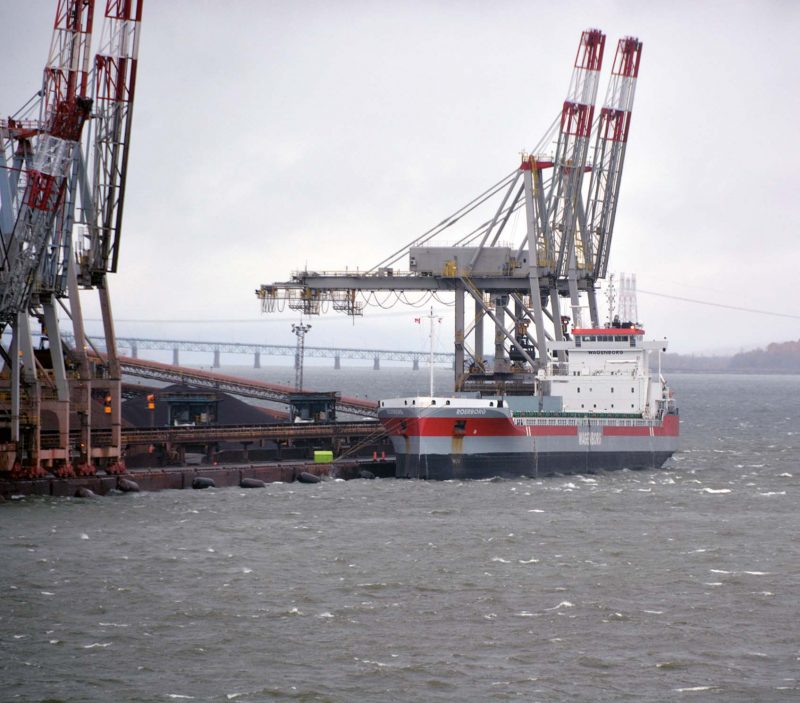
However, by the end of 1933 the Quebec Harbour Commission was in deep financial trouble as the Great Depression had reached a crisis after four long years of severely reduced trade. The Gibb report, published in 1936, recommended that the huge financial deficit be addressed by the Government of Canada dissolving the Quebec Harbour Commission and creating a National Harbours Board instead. The term ‘Quebec Harbour’ was replaced with that of the ‘Port of Quebec’ that referred to its geographic sector on both the north and south sides (North Shore and South Shore) of the St. Lawrence and not its administration. The Port of Quebec then began to expand again and had a total of sixteen wharves and terminals by the outbreak of war again in September 1939. These were:-
- Princess Louise Docks Outer Wharves facing the St. Lawrence
- Berth 25 and Berth 26 forming a very long combined wharf facing the St. Lawrence
- Breakwater Berth with two tall grain silos
- Berth 21 and the site of the Passenger Immigration Hall
- Outer Water Basin of Princess Louise Docks
- Inner Water Basin of Princess Louise Docks
- St. Charles River Berth 27
- St. Charles River Berth 28
- St. Charles River Berth 29
- Pointe a Carcy Berth 8
- Canada Steamship Lines (CSL) wharves
- Wolfe’s Cove Terminals on the north side and just upstream of the main port
- Oil Wharf on the north side just upstream of the main port
- National Harbour Board Berth 50 on the north side of the St. Charles river estuary.
PORT OF QUEBEC IN POST-WAR YEARS
The Canadian Army had responded to calls from Britain for troops in great numbers, and the survivors returned to the Port of Quebec at the end of 1945 and in 1946. Major changes were made in 1953 to the port infrastructure by the National Harbours Board, with new terminals added. The deficiencies identified in the 1936 Gibb Report were corrected at this time, and by the end of the 1950s construction was underway of five new deep water docks with an alongside depth of fifteen metres on the Beauport Flats to the north of the port. Wharf construction at the new Beauport Docks also created the Beauport Bay beach for water sports enthusiasts with direct access to the St. Lawrence river. The major Expo 67 event was held in Montreal in 1967 but traffic also increased at Quebec with the arrival of such well known international liners such as France of French Line and Michelangelo of Italia Line, doubling the number of passengers landed at Quebec during that year. The Port of Quebec docks and wharves in 1967 were now:-
- Princess Louise Docks Outer Basin Cross Wall Berth 14 of length 600 feet, transit shed of 351 feet in length by 37.5 feet, alongside depth of 25 feet and used by the coastal trade
- North Wall Berth 20 of length 1,100 feet with two central travelling grain export towers, alongside depth of 26 feet, and general cargo facilities
- South Wall Berth 19 of length 600 feet, transit shed of length 462 feet in length by 106 feet, depth alongside of 29 feet
- Breakwater Berth of length 70 feet, depth alongside of 21 feet
- Princess Louise Docks Inner Basin The width of the lock entrance gates was 66 feet allowing ships up to a maximum beam of 65 feet to enter this inner basin.
- North Wall Berth 1 of length 900 feet, no transit sheds, depth alongside of 26 feet, used for bulk and general cargo
- North Wall Berth 2 of length 1,200 feet, no transit sheds, three travelling gantries used for discharging coal, depth alongside of 26 feet
- West End Berth of length 400 feet, no transit sheds, used for storing coal, depth alongside of 22 feet
- Cross Wall Berth of length 600 feet, not transit sheds, used for general cargo, depth alongside of 28 feet
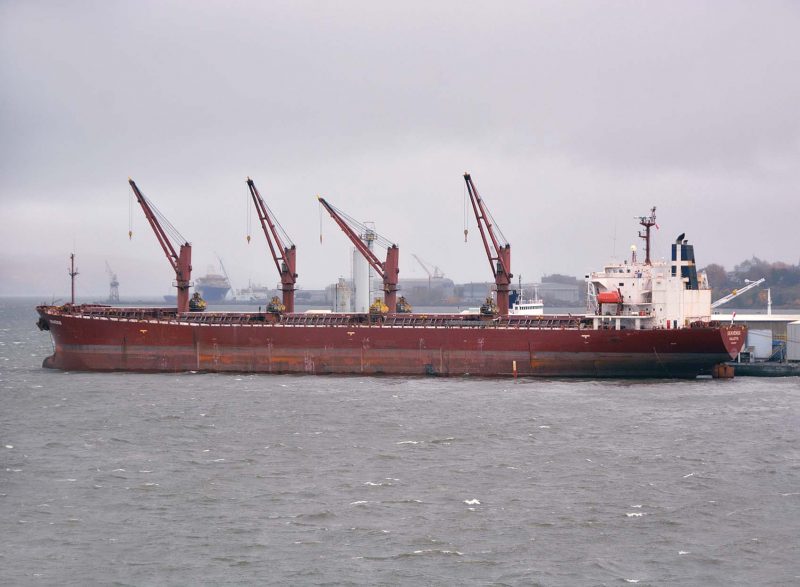
ST. LAWRENCE RIVER
- Berth 25 of length 700 feet, alongside depth of forty feet, transit shed of length 644 feet by 90 feet used for general cargo
- Berth 26 of length 800 feet, alongside depth of 40 feet, transit shed of length 694 feet by 140 feet, used for general cargo
- Breakwater Berth 18 of length 800 feet, alongside depth of forty feet, two travelling towers to unload the largest Great Lakes grain carriers at a rate of 72,000 bushels per hour
- Pointe a Carcy Berth 8 of length 500 feet, alongside depth of 27 feet, transit shed of length 374 feet by 90 feet, used by both ocean going and coastal vessels
- Pointe a Carcy Berth 21 of length 500 feet, alongside depth of 37 feet, transit shed of length 240 feet by 50 feet, used for general cargo
- Customs Pond Berth 22 of length 400 feet with alongside depth of 17 feet used by coastal traffic
- Fish House Pier of alongside depth of 15 feet used by fishing craft and tugs
ST. CHARLES RIVER
- Berth 27 of length 1,000 feet with alongside depth of 35 feet, transit shed of length of length 520 feet by 90 feet
- Berth 28 of length 650 feet with alongside depth of 35 feet, transit shed of length 560 feet by 102 feet and used for general cargo
- Berth 28/29 of length 500 feet with alongside depth of 40 feet, no transit sheds, grain load galleries and general cargo cranes
- Berth 29 of length 1,000 feet with alongside depth of 35 feet, transit shed of length 1,000 feet by 124 feet, grain loading galleries and general cargo cranes
- Berth 30 West for export of grain on berth length of 550 feet, alongside depth of 35 feet, grain loading galleries, no transit sheds
- Oil and Coal Berth of length 950 feet with alongside depth of 30 feet, no transit sheds, used for loading ore and coal bulk carriers
- St. Charles River North Side Berth 50 of length 700 feet with alongside depth of 37 feet, no transit shed, used for loading bulk cement and refined petroleum products
- St. Charles River North Side Berth 51 of length 700 feet with alongside depth of 42 feet, berth used for similar trades to Berth 50
- Anglo-Canadian Pulp and Paper Mills Ltd. berth of length 1,200 feet with alongside depth of 24 feet, transit sheds for paper storage, private wharf used for paper, pulp, coal, sulphur etc exports with loading rate of between 1,200 and 1,500 tonnes per day

WOLFE’S COVE TERMINALS
- Berths 1 to 8 of total length 4,950 feet with alongside depth of 37 feet, three transit sheds each of length 700 feet, fuel oil supplied to ships from oil berth nearby
- Oil Berth of length 2,440 feet with alongside depth of 37 feet at south west extremity of eight berths (above)
- Pointe a Pizeau Sillery Wharf Small tanker berth with a depth alongside of thirteen feet, also a similar berth of length 103 feet for small craft Levis Docks on South Shore
- National Harbours Board Wharf of length 715 feet, alongside depth varying from 21 feet to 41 feet, with Levis Ferry Terminal at one end
In 1967, Transatlantic liners of Canadian Pacific Steamships, Cunard Line, Greek Line, Home Line, Arosa Line, Europa-Canada Line, Saguenay Shipping, Mormac Lines, Manchester Liners, Iino Lines, Holland America Line, Gdynia Line and many other lines called at the port. Freight exports consisted of asbestos, grain, ores and minerals, paper, pulp, newsprint, timber, flour and foodstuffs, clothing, scrap metal and many more commodities. Freight imports consisted of coal, oil fuel, gasoline, fertilisers, sulphur, molasses, salt, dry bulks, cement, alcoholic beverages, steel plates for shipbuilding, cars and trucks and many more commodities. The official navigation season on the St. Lawrence river extended from 1st April to 31st December depending on ice conditions, but several freighters with reinforced bows regularly traded during the winter months. Pilots of the Quebec Pilotage Authority met incoming ships at Basques Cove, with fees for harbour dues, pilotage, foyboatmen, towage, shore mooring lines, loading and unloading of cargo by dockers dues, customs dues, immigration dues (where applicable) and water service charges all payable.
In 1972, the Port of Quebec set a new tonnage record of an increase of 41% over the previous year total of 1970. However, grain production had decreased slightly by the late 1970s across Canada, and with more grain being sent to the Port of Vancouver for export instead. The Government of Canada replaced the National Harbours Board in 1983 with the Canada Ports Corporation (Ports Canada), consequently the Port of Quebec changed its name to Quebec Port Corporation. The arrival of Jacques Cartier 450 years earlier was celebrated in 1984 with a Transatlantic sailing race between Quebec and St. Malo, the hometown of the French explorer. The Port of Quebec and the Historic Upper Area of the city was declared a UNESCO World Heritage Site in 1985. Diversification into new trades in the late 1980s saw imports and exports total 18.3 million tonnes in 1988, with the largest tankers berthing at the Jean-Gaulin oil terminals of Ultramar Ltd. with 140,000 tonnes of crude oil.

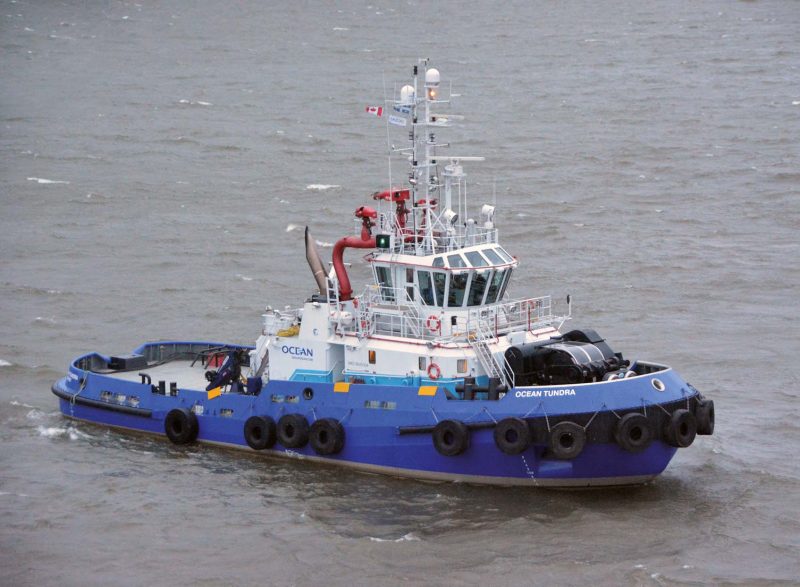
The Port of Quebec dredging work regularly brought vessels of draft of up to 15.65 metres into the port by 1990, with a boost that year from cruise ships rerouted to the port because of the conflict in the Persian Gulf. Cruise ships such as Rotterdam of Holland America Line, Sea Princess of Princess Cruises, and Crystal Harmony of Crystal Cruises of Japan, and others swelled the port total for the year to 51,000 passengers. The Port of Quebec at the end of that year officially launched its cruise industry, which has grown significantly over the next 25 years.
PORT OF QUEBEC AFTER THE MILLENNIUM
The Canada Marine Act (CMA) of 1998 created independently managed and autonomously directed port authorities, with the Quebec Port Corporation renamed as the Federal owned Quebec Port Authority (QPA). The cruise industry was developed by the QPA by taking control of all wharves and properties on the Pointe a Carcy site, previously administered by Public Works Canada, and investing $32 million in a new cruise terminal. The Ross Gaudreault Cruise Terminal was completed in 2002 with Rotterdam of Holland America Line as the first cruise ship to call. An entertainment and events venue, Espace Dalhousie, was completed nearby, with Cunard Line sending their Queen Mary 2 with 3,000 passengers to the terminal, to enjoy the events venue and the City of Quebec.
The redevelopment of three riverside sites, Pointe a Carcy, Beauport Bay and Basin Brown, was taken a step further in 2008 to commemorate the 400th Anniversary of the City of Quebec. One fifth of the Port of Quebec wharves and area was now turned over to cruise tourism at Wharves 19, 21 and 22, and on 5th October 2012 this was rewarded with the arrival of 25,000 cruise passengers in less than 48 hours. Twenty four cruise lines call regularly, with short cruises to the Iles de la Madeleine in the Gulf of St. Lawrence operated by CTMA Cruises and their smaller cruise ship CTMA Vacancier. Dry cargo and crude and refined oils traffic had reached a year-end total of 33.1 million tonnes by the end of 2012. Cruise traffic into the Port of Quebec has to a certain extent taken over from the cargo traffic, but the award of a cane walking stick with a golden top is still given to the Master of the first cargo ship to call at Quebec each year. In the first few days of January 2016, the tanker Apollon of 53,150 dwt owned by TEN Tankers (Tsakos) of Greece arrived in the Beauport sector from Port Arthur (Texas) with a cargo of oil destined for Vopak, and her Master was duly presented with this treasured memento.
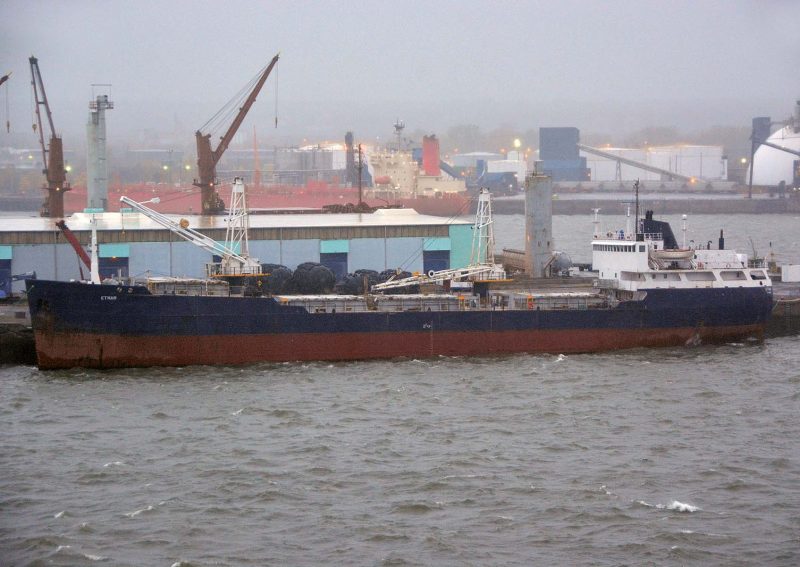
The Port of Quebec traffic is now structured into various sectors of operation including:-
BEAUPORT SECTOR
Beauport Bay multimodal transfer port to the north of the main port on the north bank of the St. Lawrence has been operating for twenty years, with a new terminal added for the Canadian American Iron and Metal Company for the recycling of ferrous scrap metals. The sector is operated by St. Lawrence Stevedoring and has a capacity of several 100,000 tonnes of scrap metal.
ESTUARY SECTOR
This sector consists of a grain terminal and a cement import terminal, the latter operated by Beton Provincial as the only such cement terminal on the St. Lawrence. The wharf accommodates Panamax bulkers up to 75,000 dwt with good road and rail connections for the onward shipment of cement. Bunge of Canada has been operating the grain terminal for over forty years, with loading rates per ship of 5,000 tonnes per hour and storage of grain at 225,000 metric tonnes. The wharf has grain winnowing facilities for grain imported from Thunder Bay in the Great Lakes, and supplies feed grain to agricultural producers and co-operatives.
POINTE A CARCY SECTOR
The port for the largest cruise ships in the world bringing at least 168,000 cruise visitors to sample the delights of Quebec each year. There is also an urban park for both visitors and citizens to enjoy, while watching the cruise ships come and go, with ships also anchored at the nearby anchor points of Alpha, Bravo, Charlie and Delta on the St. Lawrence river.
ANSE AU FOULON SECTOR
Formerly known as Wolfe’s Cove and located further upstream from the main port handles large volumes of dry cargo serving the Great Lakes market. Sugar is handled at Wharves 105 and 106 for the largest sugar refinery in Ontario. The MidAtlantic Minerals Terminal opened in 1999 to specialise in processing limestone and dolomite. The Road Salt Terminal has operated for 27 years with self unloaders supplying the salt on the open ground, with contractors trucks distributing it to the roads. Coop Federee has stored and distributed 30,000 tonnes of agricultural fertiliser products per year since 1991 e.g. urea, phosphates, nitrates and potassium arriving by deep sea vessels. The Sillery Distribution Centre handles grain cargoes e.g. feed grains, barley, wheat, canola, soya and corn with storage facilities for 75,000 tonnes.
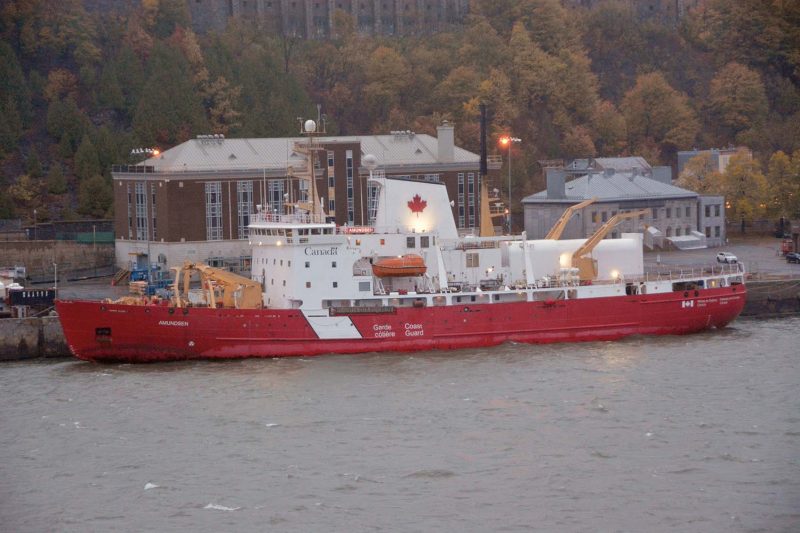
NORTH SHORE SECTOR
The sector is home to the Canadian Coastguard and the ferries of the Societe des Traversiers du Quebec operating to communities on the north bank of the St. Lawrence. The Quebec base of the Coastguard was established in 1980 for icebreaker services along the St. Lawrence in winter, and also lifts and repairs buoys and navigational aids.
SOUTH SHORE SECTOR
The sector is home to the ferries serving Levis of the Societe des Traversiers du Quebec operating to the south bank of the St. Lawrence, as well as the Davie Quebec Shipyard, the largest yard in Eastern Canada, and the Jean-Gaulin refinery of Ultramar Ltd.
DAVIE SHIPBUILDING YARD
This yard on the South Shore at Lauzon across the St. Lawrence from Quebec has been building ships for almost two hundred years, with Lauzon now part of Levis city. The yard was founded in 1825 by Allison Davie (1796-1836) and built many Canadian and American wooden schooner and clipper sailing ships during the 19th century. The yard was owned by George T. Davie & Sons in 1850, and by the first decade of the 20th century, descendant George D. Davie was General Manager of both the Shipbuilding Department and the Shiprepairing Department of the Davie Shipbuilding and Repairing Co. Ltd. The yard had four building berths for ships up to 650 feet in length with a maximum annual output of 20,000 tonnes, while there were two graving docks, the big ‘Champlain’ dock of length 1,150 feet and 120 feet wide, and the smaller ‘Lorne’ dock of length 650 feet and width of 62 feet.
The Davie family sold the yard in 1929 to Canada Steamship Lines (CSL), but then started another smaller yard immediately adjacent to their former yard. The twin Davie yards of Davie Shipbuilding Ltd. (owned by CSL) and the George T. Davie & Sons Ltd. yard (family owned) had a prodigious output during World War II of standard ‘Park’ cargo ships of 10,000 dwt and 35 warships including many minesweepers, corvettes and destroyers. One of the standard ‘Park’ ships of 10,000 dwt was Point Pleasant Park, which sailed away on completion on 8th November 1943 for the war effort. She was later torpedoed and sunk on 23rd February 1945 when 500 miles north west of Cape Town while on a voyage from St. John (NB) to New York, Trinidad and Cape Town with general cargo. Her assailant was U510 whose Commander spotted her while she was on a late war voyage en route to Germany with a precious cargo of tungsten from the Far East for the failing Nazi war effort. Point Pleasant Park was sunk by a torpedo exploding ‘midships with the loss of nine members of her crew of 58. A large stone memorial was later placed in Point Pleasant Park in Halifax (NS), the ceremony attended by some of her surviving crew, with a wreath sent by the Master of U510.
Canada Steamship Lines (CSL) ownership of the twin Davie yards continued until the 1970s with their engines aft ‘Laker’ Metis of 3,870 dwt completed by the yards in 1956. On 27th October 1955, one of the yards was almost destroyed by a fire that started in the foundry and burned for eight hours. Many yard employees were left without work for several months while the yard was rebuilt. The combined Davie yards in 1973 had nine building berths and ten outfitting wharves, all under the ownership of CSL, and building many large and small tankers e.g. Andros Venture 17,987/53, Andros Fortune 18,504/54, Federal Monarch 26,912/59, Emerillon 26,968/60, four tankers for the Hall Corporation, Imperial Bedford 9,500/69 for Imperial Oil, Kriti Star, Kriti Land, Kriti Wave all 42,470/74 for Greek owners, Lucellum and Lucerna both 23,736/75 for Cunard Line, and Athelqueen and Athelmonarch both 24,132/77 for Athel Line. The last tanker to be completed was L’Erable of 11,626 dwt, an ice strengthened tanker fitted with clean ballast arrangements for Canadian owners in July 1982.
Many ‘Lakers’ of 35,000 dwt were built for CSL, Algoma Central, and other Canadian owners e.g. Montrealais, Halifax, Algontario, Algomarine, Algosteel, Algocape, Canadian Ranger, Frontenac, CSL Assiniboine, Cedarglen and others. Yard output in the 1970s and 1980s comprised warships and some large oil rigs as well as oil rig supply vessels. A review of Canadian shipbuilding yards similar to the formation of British Shipbuilders Ltd. in the U.K. merged the Davie yard with that of the bigger Marine Industries Ltd. (MIL) yard at Sorel (Quebec). The rationalised MIL Davie Shipbuilding yard became State owned in the 1990s, but was again in trouble in 2006 and on the brink of closure when it became privately owned as Davie Yards Inc. to build warships after completing an order book of oil rigs, oil rig supply vessels and pipelayers for Petrobras of Brazil.
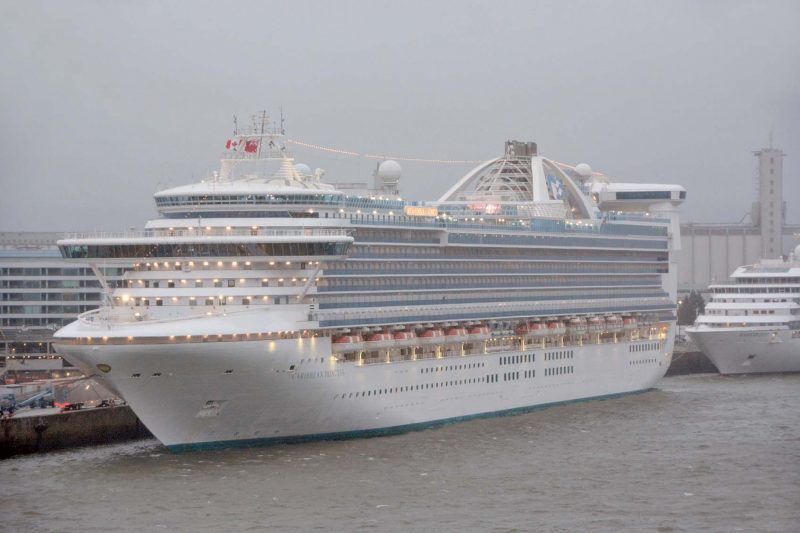
POSTSCRIPT
The Port of Quebec has seen a growth in traffic of 80.5% over the last ten years, and now supports a large workforce as well as the tourist industry of Quebec. Vessels arrive from sixty countries as the port is the last deep water port on the St. Lawrence river before entering the St. Lawrence Seaway. The Beauport 2020 area is a major development project for the port as a transfer point between the industrial and agricultural core of North America and the rest of the world. The project will add a further 610 metres of wharf and 17.5 hectares of open land to the already massive unloading and loading operations. Beauport will be a major port of call on the St. Lawrence for bulk carriers in the future, with the old port at the foot of the Frontenac massif growing year by year into an important port of call for the largest cruise ships in the world.
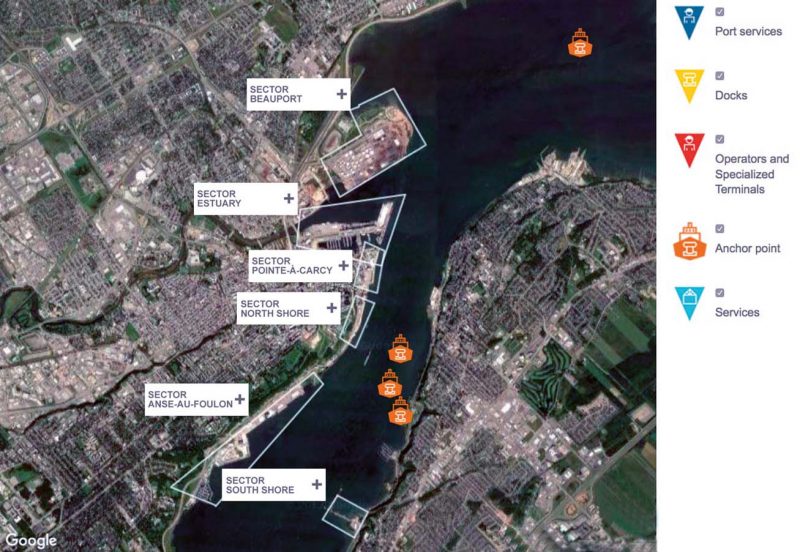
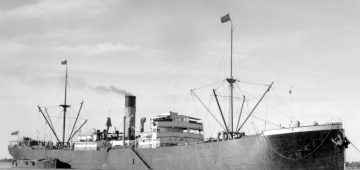



Comments
Sorry, comments are closed for this item